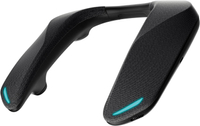
Gaming mics are a dime a dozen these days, with little to no one willing to innovate exceptional products that meet the demands of most players. While you could always peruse the best gaming headsets to find one that suits your needs, chances are you won’t find one that’s as comfortable as it is spellbinding in audio quality.
A new trend, however, is fast reshaping the way companies look at the conventional gaming headset. Instead of offering the all-too-typical over-the-ear headset formula, audio solution designers like Sony and Panasonic are dreaming up a new way for us gamers to experience our favorite pastime — and it all starts around our necks.
Like an audio necklace, the Panasonic SoundSlayer fuses a speaker and microphone design into a U-shaped device that fits snugly around your nape. It’s here where all of your gaming sounds will now live, right under your ears on your shoulders so you never miss a single beat of the action — nor, too, will your teammates.
I’ve been using the new SoundSlayer over the past few weeks while playing Elden Ring: Shadow of the Erdtreee and I’ve got several thoughts on this new take on gaming audio. Could this be the new go-to design for future gaming speakers and mics, or is it just another gimmick with little utility? Read on to find out.
Panasonic SoundSlayer: $299 @ Amazon
The Panasonic SoundSlayer is a wireless wearable speaker system with built-in microphone that you can use for gaming, movies and music. It offers immersive dimensional 4-channel sound and an easy-to-wear ergonomic design with three gaming sound modes.
A mic and speaker rolled into one
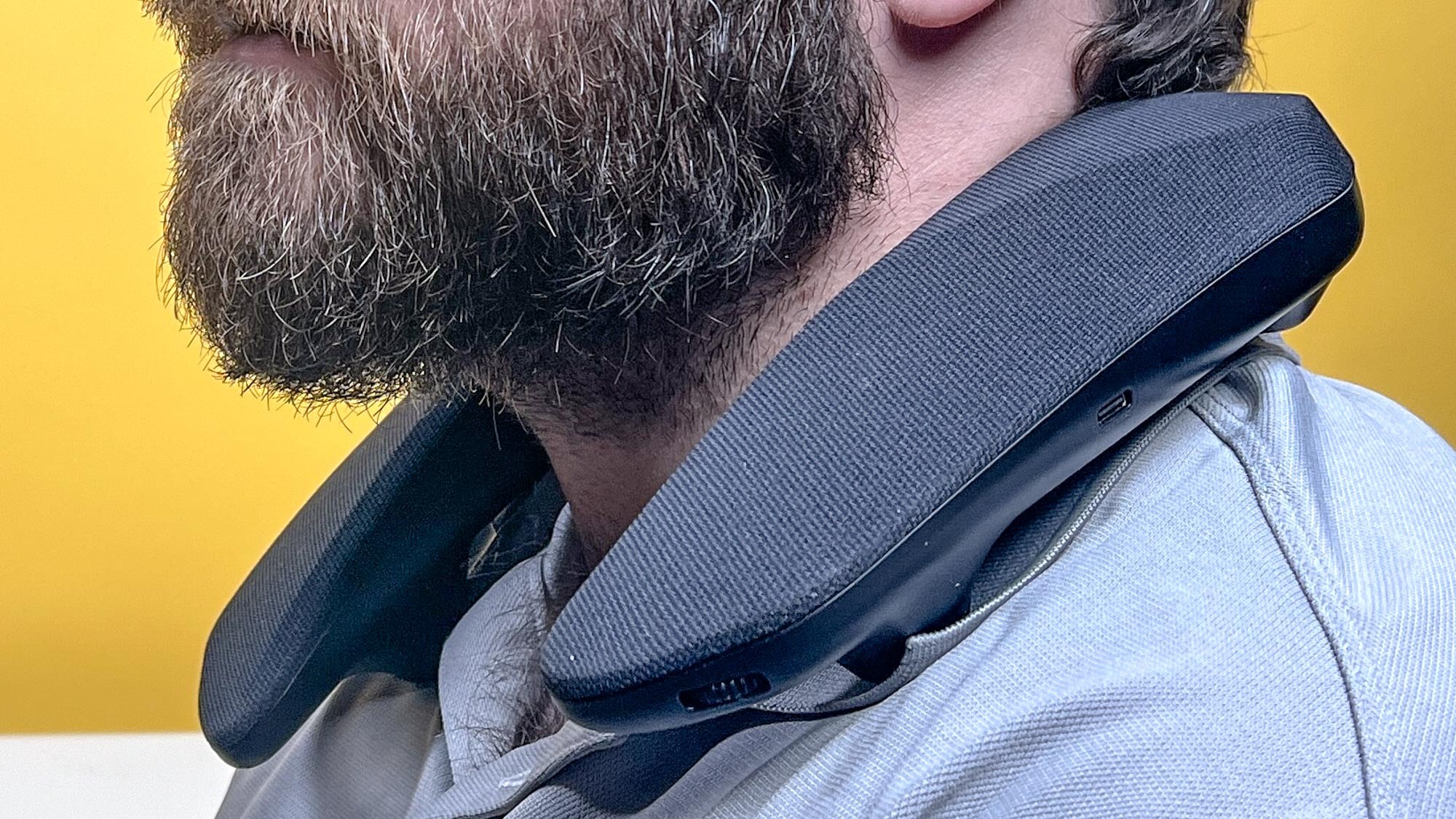
The SoundSlayer by Panasonic is a wireless speaker and mic system — one that takes extreme liberties in its design by way of steering away from the over-the-head formula. Instead, it comes as an around-the-neck device. At first glance, it gives the impression of one of those travel neck pillows and does well in delivering a hands-free audio experience with an 8W surround sound full-range speaker.
Using a wireless and lag-free system built on a dedicated low latency 2.4GHz band, the SoundSlayer brings uninterrupted sound straight to your ears with an under 20ms latency. I personally never noticed any issues when it came to audio latency, and my friends in party chat never noticed any problems on their end either — whether that be latency or echo.
What makes the SoundSlayer so ideal for me is its positioning. My ears can get a bit fatigued when wearing a bulky gaming headset for several hours. That doesn't happen here since my ears are free. It’s also nice to be more aware of my environment if I’m ever multitasking during gaming sessions, like cooking or cleaning in the middle of load times.
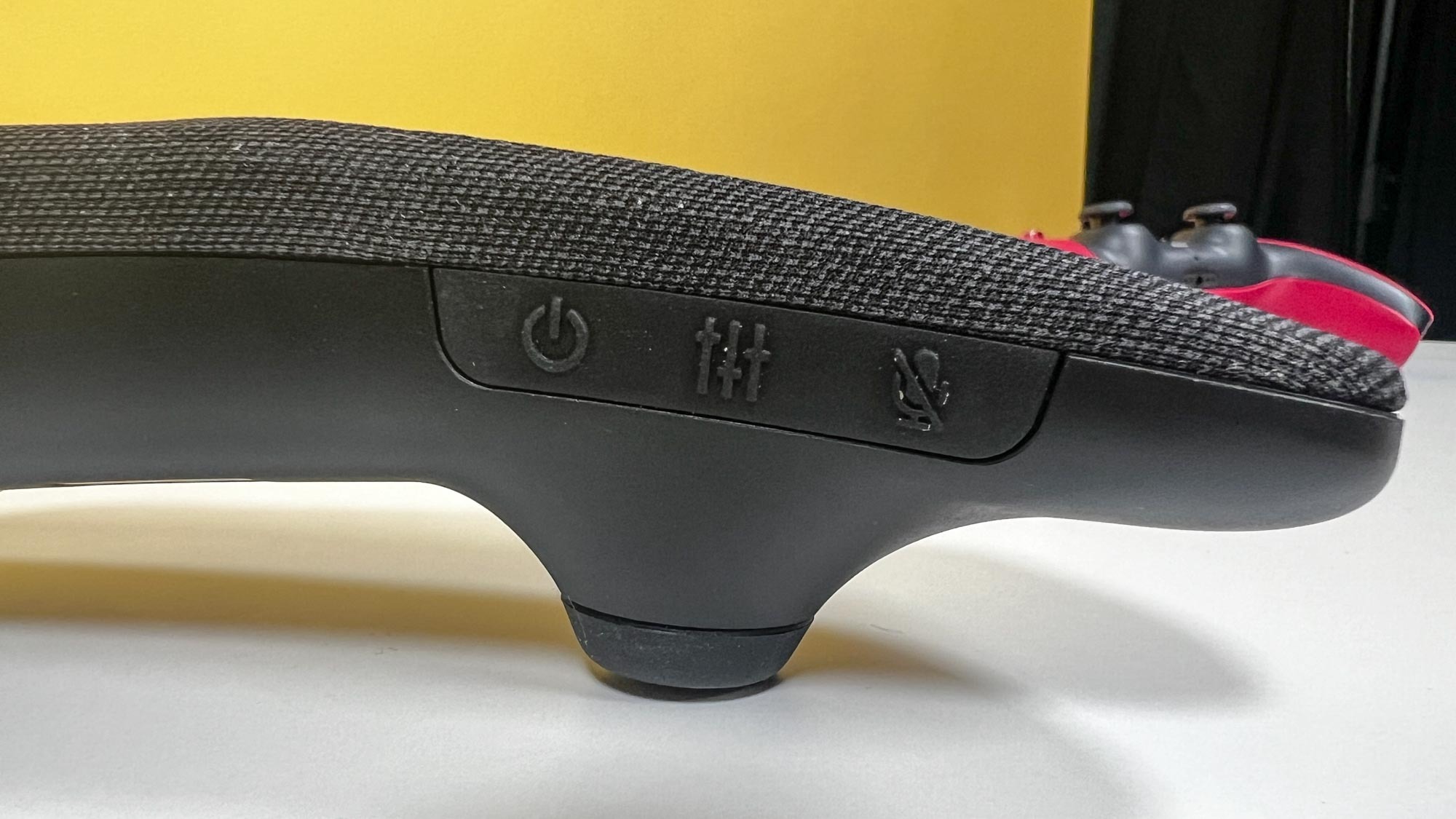
But for all its pros, the SoundSlayer really stood out against competition like the SteelSeries Arctis Nova 5 and Sony’s own Inzone H5 by being the perfect stereo system when other friends were in the room. This made it simple for me and all of my friends to communicate with each other without me having to relay to those in the chat bits of the external conversation.
Niche as this one use case might be, the SoundSlayer still proved ideal thanks to its ease of use and general comfort. I simply plugged the receiver into my PS5 and the SoundSlayer worked perfectly. It also comes equipped with six different sound modes, each tailored to specific gaming genres to meet that audio standard where it matters most.
Audio quality concerns and comfort
Although I might’ve become an Elden Lord thanks to the SoundSlayer, it isn’t without several faults — chief among them being a somewhat hefty price tag. Panasonic offers the SoundSlayer for $299 on its store page, which mirrors its biggest competitor in the Bravia Theater U, one of the newer products among Sony’s 2024 TV and audio lineup.
While we don't yet have a Theater U in our hands (stay tuned for a more thorough versus soon), it's safe to assume that the SoundSlayer simply can't compete in audio quality and comfort provided by its rival. Once you factor in Sony's 360 Spatial Sound Personalizer and its advertised 12 hours of use against the SoundSlayer's mere nine, coupled too with Sony's many years' worth of audio ingenuity, and it's hard to see Panasonic's version coming out on top.
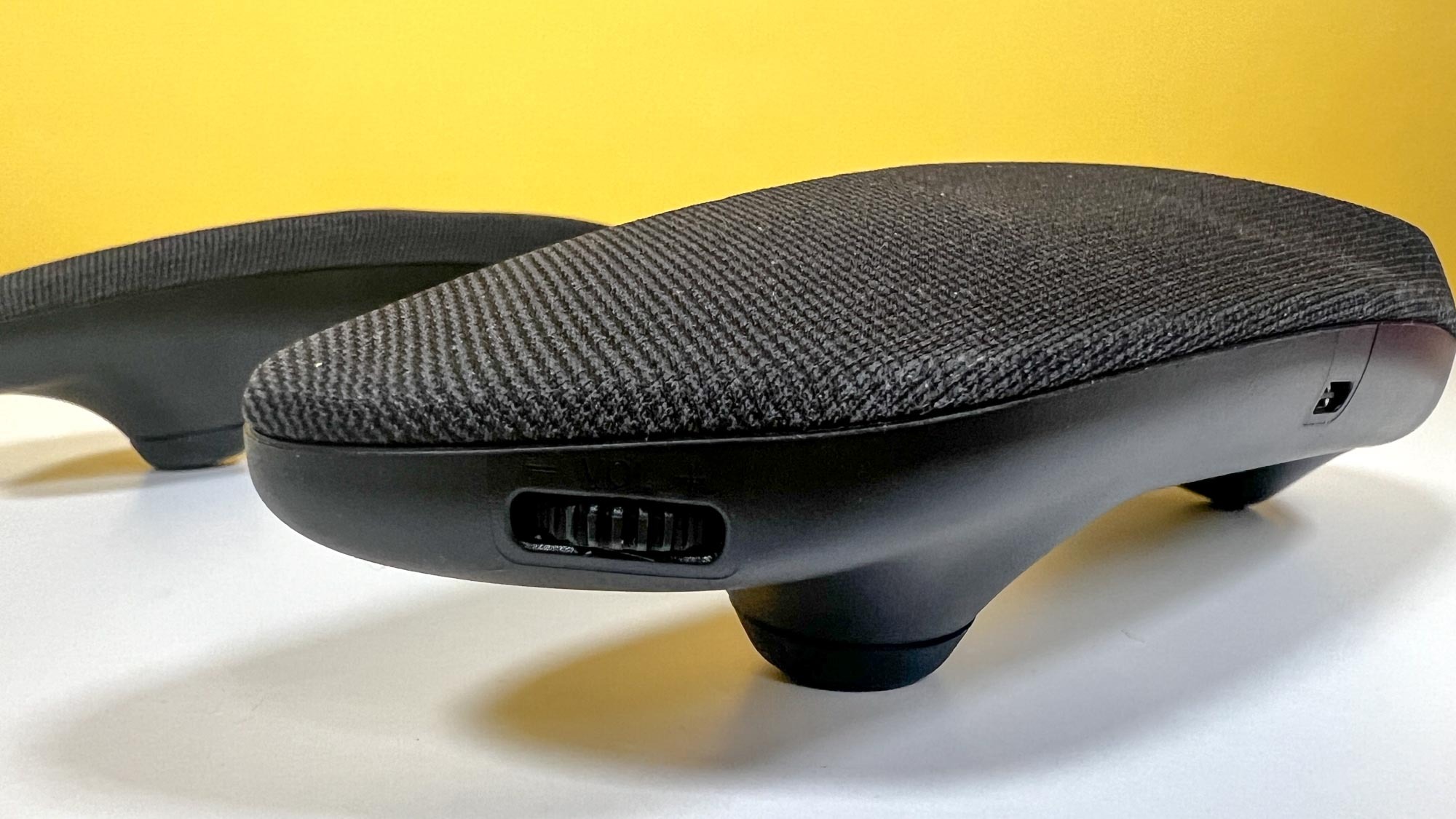
I fear pricing is a bit skewed for the SoundSlayer — especially given that its underlying audio performance isn't the most ideal. Audio output is often punctuated by a slight tinny sound, and you can't adjust the SoundSlayer to hit extreme high levels of volume, either, which is a bit of a bummer if you have a larger group in the room.
Plus, while it is quite a comfortable experience, I did find that after wearing the SoundSlayer for several hours, my nape started to get a bit red and itchy. I'm not convinced this was entirely the SoundSlayer's fault, as the heat in my room coupled with the shirt I was wearing played a factor, but comfort is certainly something to consider for a device like this.
New era of gaming sound or just a gimmick?
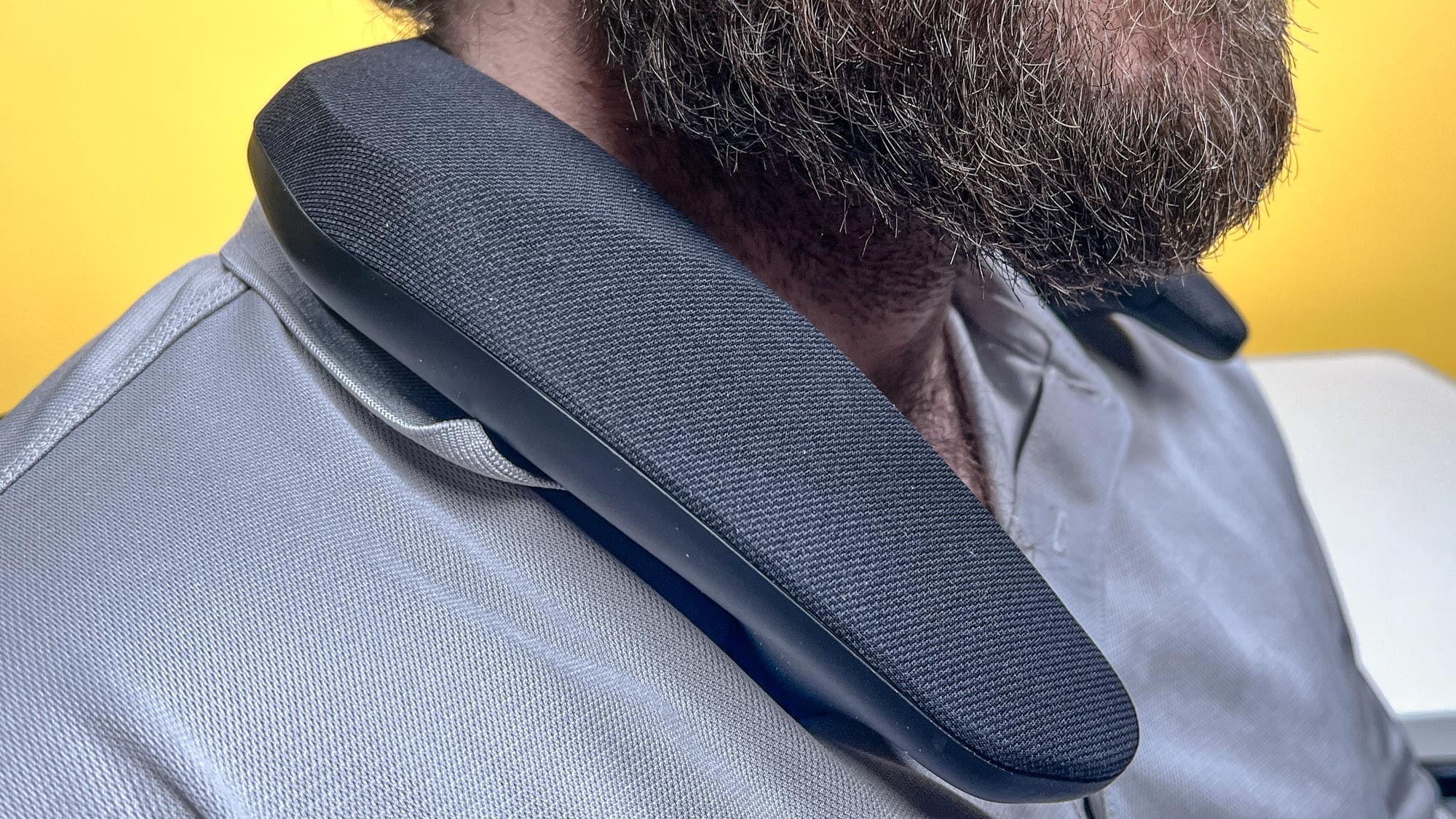
The verdict for me right now is hard to quantify. While I enjoyed my time with the SoundSlayer, I hoped the audio would be far crisper and louder. I think pushing the audio and microphone solution to your neck is an interesting play, but whether it has legs in the market really depends on quality.
Gamers want (and often need) high-quality audio that not only nails the immersion factor but also aids in their performance. Look at Call of Duty, Valorant, and even Overwatch — all of which contain deep levels of detail in their in-game audio. Multiplayer games on this scale require every sound to be heard, especially those of enemy movements.
That's why I think the SoundSlayer is quite the bold statement for gaming audio, but serves a function that many players might find ideal. Will it help you become a gaming god? Probably not, but it does offer a new approach to the formula and I quite enjoy the concept.
Stay tuned to see how it fares against Sony's Bravia Theater U and where this new era of gaming audio is headed.
More from Tom's Guide
Sign up to get the BEST of Tom's Guide direct to your inbox.
Get instant access to breaking news, the hottest reviews, great deals and helpful tips.

Ryan Epps is a Staff Writer under the TV/AV section at Tom's Guide focusing on TVs and projectors. When not researching PHOLEDs and writing about the next major innovation in the projector space, he's consuming random anime from the 90's, playing Dark Souls 3 again, or reading yet another Haruki Murakami novel.
